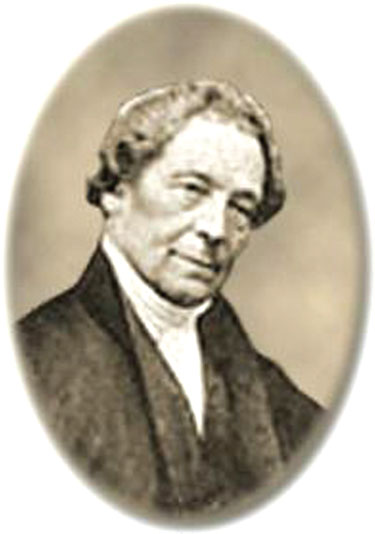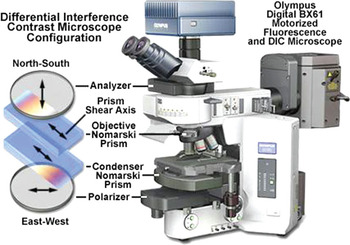
Joseph Jackson Lister (1786–1869)
Though microscopes and telescopes had been invented in the late sixteenth century, various optical difficulties meant that the devices were more commonly considered novelties than useful scientific instruments for many years. Chief among these problems were aberrations in the images caused by optical errors from the lenses. Many scientists had attempted to rectify such difficulties, but the nineteenth-century amateur microscopist Joseph Jackson Lister is credited with making some of the most important advances toward correcting image aberrations and establishing the microscope as a powerful means of carrying out serious scientific investigations.

Born in London, England on January 11, 1786, Lister was a Quaker whose interest in optics was sparked in his youth. He was reportedly a gifted student, but his formal education came to an end when he was only fourteen, at which time he began working with his father, a wine merchant. In 1804, he was granted a partnership in his father's business, which he would maintain throughout his life. He was also, however, engaged in other business ventures, such as acting as an investor in a ship that his brother-in-law would command. Furthermore, as a very influential Quaker, Lister was significantly occupied by religious activities as well as his scientific investigations. He met his wife, Elizabeth, who taught reading and writing, through his ongoing involvement with various schools. Together the couple had seven children, one of which, Joseph Lister, became a famous surgeon who was the first to develop antiseptic practices.
Joseph Jackson Lister began studying lenses in the mid-1820s, but his landmark paper, which explained how lenses could be combined in a compound microscope in such a way that chromatic aberration was greatly reduced, was not submitted to the Royal Society until 1830. Aided by the renowned optician William Tulley, Lister had found that by combining lenses of flint glass with those of crown glass and spacing them at specific distances from one another, the refractive problems of one were amended by the other, enabling clearer microscopic observations than ever before. This information as well as the depiction of numerous experiments carried out by Lister impressed the Royal Society to such a great extent that they appointed him a fellow of the scientific academy. Also, soon after the revelation of Lister's discovery, his system was adopted widely by microscope makers, becoming an industry standard. Lister himself often advised London instrument makers and even began grinding his own lenses.
A notable consequence of the microscope improvements suggested by Lister was the elevation of histology into an independent science. Now that they were no longer plagued by optical error, microscopes revealed previously unseen details in tissues of all types, greatly advancing the medical knowledge base. In fact, Lister was the first to accurately observe and report the true appearance of red corpuscles present in mammalian blood. Other investigations carried out by the microscopist before his death on October 24, 1869, included those focusing on zoophytes and the limits of the human vision system.
Maksymilian Pluta (1929–2002)
Maksymilian Pluta was a renowned professor and optics pioneer who authored one of the definitive twentieth-century texts on light microscopy. Though he rose to great heights in the fields of optics and microscopy, he began his life under humble circumstances. Pluta was born on February 28, 1929, in Karwin, Poland, to a large peasant family and completed his earliest education in difficult conditions during World War II. After the war had ended, financial hardship made it necessary for Pluta to move to Chorzów, where he lived with relatives.

When Pluta completed his secondary education in 1949, he decided to continue his studies at Jagiellonian University in Cracow. There he concentrated on physics and chemistry, subsequently attending Warsaw University, from which he obtained a master's degree in physics in 1954. While still a graduate student, Pluta began working at the Optics Department in the Institute of Precise Mechanics, which was later reorganized into the Central Optics Laboratory and then into the Institute of Applied Optics. He would remain involved with the department and Warsaw University in varying capacities throughout his entire professional career.

In 1964, Pluta was awarded a grant from the French government, which enabled him to receive additional scientific training at the Optical Institute in Paris under the direction of distinguished physicist and optics theoretician Georges Nomarski. There Pluta's work was primarily focused on holography, which he hoped to be able to apply to microscopy, one of his primary areas of interest. Pluta was also intrigued by Nomarski's differential interference contrast (DIC) method of microscopy, a technique that he later substantially improved.
A tireless worker and avid researcher, Pluta received the title of assistant professor and professor before he had even been awarded the appropriate degrees. The discrepancy occurred because Pluta had been too busy with his scientific endeavors to submit the necessary paperwork. An admirably independent thinker, when Pluta was attempting to complete his formal education, he spent a significant amount of time developing his own theories rather than focusing on the work of others. For example, when he wrote his assistant professor dissertation he did not reference any other authors but simply put forth his own idea and its development.
Pluta was extremely apt at finding solutions for problems in microscopy and made a wide variety of contributions to the scientific world. He penned three eminent optics texts, including Phase-Contrast and Interference Microscopy (1965), Optical Microscopy (1980), and the authoritative three-volume Advanced Light Microscopy (1988–1993), in addition to more than a hundred original scientific research reports and papers. He was the assignee of several patents, and many of his inventions were applied by the Polish optics industry. Also an expert in microinterferometry, Pluta developed several new microinterferometric techniques, including a unique method of variable wavelength interferometry (VAWI).
A great leader, Pluta was highly involved with a number of scientific societies and editorial advisory boards, and he organized a number of scientific conferences. He was a fellow of both the Royal Microscopical Society and the International Society for Optical Engineering (SPIE), as well as an honorary member of the State Microscopical Society of Illinois. He also founded the Polish chapter of the SPIE and was its president for many years. Among the many awards bestowed on Pluta were the Silver Cross of Merit, the Cross of Poland's Independence, and the Gold Honor Badge of the Italian Society of Mineralogy and Petrology (SIMP). He was also awarded a prestigious prize from the Foundation of Polish Science in 1995 in the field of technical science for his opus Advanced Light Microscopy, which is still available from booksellers. Pluta's landmark treatise on basic and advanced techniques is considered by many microscopists to be the most comprehensive and definitive treatment of optical microscopy yet published.


